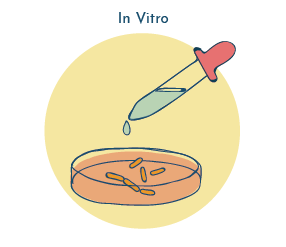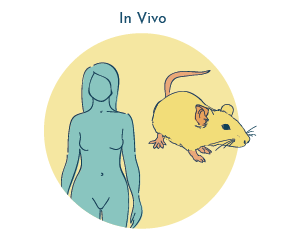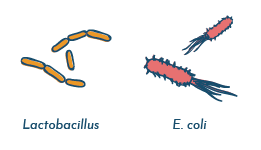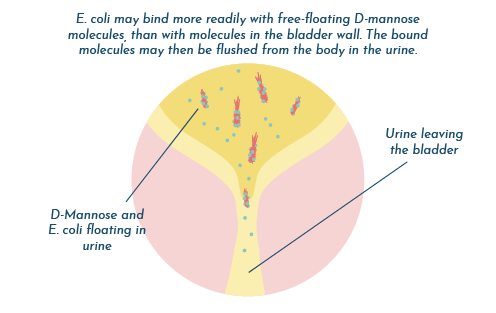Vitamin C Cause Uti
D-mannose for UTI made it into our list of the ten most searched UTI home remedies, among other UTI home remedies like vitamin C, probiotics and Pau d'arco. We also get a lot of questions about it. It's clearly popular, but does D-mannose work for recurrent UTI?
Article Quick Links
- What is D-mannose? >>>>
- The science behind D-mannose. >>>>
- Where does D-mannose come from? >>>>
- The problems with D-mannose for UTI. >>>>
- What the D-mannose research tells us. >>>>
D-Mannose In Brief
Some studies suggest that D-mannose may be effective prophylactically for some cases and help to prevent urinary tract infections. Other studies show that D-mannose primarily reduces the severity of symptoms.
Yet another study concluded that D-mannose may be effective in treating an acute UTI.
So what does all this mean? In a nutshell, there is not yet enough research to tweeze out exactly what to use D-mannose for, what pathogens it may be protective against in vivo (in actual patients and not just in a lab setting), and what the correct dosage should be.
It's also important to know that D-mannose for UTI is not FDA regulated.
But it's firmly on our radar – so read on to find out what we do know so far.
What Is D-Mannose?
D-mannose is a simple sugar (monosaccharide) that is closely related to the glucose found in many fruits, vegetables, and plants. It also occurs naturally in some cells in the human body.
D-mannose is rapidly absorbed and reaches organs within 30 minutes, after which it may be excreted via the urinary tract. The human body can't metabolize or store D-mannose, though it is possible much of it is metabolized by bacteria in the gut.
Any effect on blood sugar levels should be minimal. For this reason, many sources claim D-mannose is safe for use by diabetics. Others issue a caution, so it's always best to discuss its use with your doctor.
What Do We Know About D-Mannose For UTI?
Here's the short answer: We don't know enough about D-mannose for UTI. As mentioned above, there is a clear lack of studies into whether D-mannose for UTI is beneficial.
Studies that do exist have not tested appropriate dosage, and limited studies exist for the effectiveness of D-mannose for females who experience recurrent UTIs.
Most look at D-mannose against a microorganism in vitro, that is, on the lab bench, and not in females with symptoms, so we don't have a lot of information about D-mannose out in the real world (in vivo).


The largest and most heavily referenced study in humans we have found involved 308 women.
In this study, the prophylactic use of D-mannose significantly reduced the risk of recurrent UTI, and was shown to be as effective as nitrofurantoin, an antibiotic.
Other Applications For D-Mannose
Other uses of D-mannose include reversing the effects of metabolic syndrome and support for intestinal problems.
Infants and children who have a rare inherited disorder called carbohydrate-deficient glycoprotein syndrome type 1b take D-mannose.
People with this condition have a deficiency of a specific protein in their intestines, the symptoms of which are reversible with dietary supplementation of D-mannose. In these cases, D-mannose improves liver function, lowers blood sugar levels, and helps prevent blood clotting disorders.
Some studies show that D-mannose may act as a prebiotic and may therefore help regulate the gut microbiome.
A prebiotic is a food substance that is non-digestible to humans, but provides a food source for "good" bacteria in your digestive system.
The Science Behind D-Mannose For UTI
It has been suggested in vitro (on a lab bench), that D-mannose competes with the uroepithelial cells (the bladder lining cells), for the "attention" of the finger-like projections, or pili, of bacteria. See the comparison below, showing the pili of E. coli vs. the smoother surface of Lactobacillus.

If the bacteria does not stick to the bladder lining, they cannot colonize the bladder and cause an infection.
Let's dig a little deeper into this. Certain types of E. coli bacteria are known to bind to the mannosylated glycoprotein uroplakin Ia that is present in the bladder lining cells. D-mannose molecules, if present in the bladder, may provide an alternative for E. coli to bind to.
According to the theory, when E. coli bind with D-mannose molecules, the combined particles are flushed from the bladder during urination. Thus, the E. coli are prevented from adhering to the bladder wall and causing a urinary tract infection.
D-Mannose Eliminates Bacteria Without Killing Them
In vitro (outside the body) E. coli has been shown to opportunistically bind to free-floating D-mannose. When ingested, it's theorized that D-mannose may make it as far as the bladder. If this is true, E. coli may bind to D-mannose floating in the bladder, instead of the molecules in the bladder wall.
If the above process occurs in the bladder, any E. coli that have bound to D-mannose molecules would be eliminated from the body in the urine, before they are able to colonize.

While all this sounds promising, it's important to reiterate that this has only been tested in a laboratory setting, and it has not been proven to actually happen in the body.
Where Does D-Mannose Come From?
As stated earlier, D-mannose is primarily derived from plants and fruits. Interestingly, D-mannose can also be found in sources like spent coffee-grounds, in which it can make up around 21% of its dry weight.
But of course we cannot eat spent coffee grounds to get an active dose of D-mannose in our bodies because we cannot effectively digest the coffee grounds to extract the D-mannose.
This would also mean ingesting other chemical products that would be more harmful to us than the protective effect of D-mannose.
In addition, eating coffee grounds is linked to an increase in blood cholesterol by an average of 26 points after three weeks. This is attributed to the consumption of the cafestol and kahweol that is found in spent coffee grounds.
Can I Eat Enough Cranberries To Get An Active Dosage Of D-Mannose?
Another source of D-mannose is cranberries. However, D-mannose makes up just 0.04% of the dry weight of cranberries. This is quite low in comparison to other sources, even the spent coffee grounds.
Needless to say, you would need to eat a ton of cranberries for your body to gain anything close to a protective dose of D-mannose. So this is not recommended as a method of ingesting D-mannose.
Watch our expert video series to learn more about D-mannose for UTI.
How Is D-Mannose Made?
There are a few ways the D-mannose you'll find in a store could have been made.
Currently, most of the D-mannose products in the food market are extracted from plants in chemical processing plants by either isomerization, hydrolysis, or catalyst reactions.
All this means is that other chemicals (such as 1% ammonium orthomolybdate or water) are added to turn D-glucose, D-sucrose, or D-mannitol into D-mannose.
The process flips the arrangement of chemical groups, adds a chemical group, and/or converts chemical groups so the original substance turns into D-mannose.
This is done under the perfect temperatures and acidity to have maximum product yield. D-mannose is then purified before being packaged and sold.
These processes are not ideal in terms of chemical purity. And because D-mannose is used as a dietary supplement and for medicinal reasons, it should not have any chemical contamination.
For this reason, the methods of chemical extraction and other chemical-based production methods are becoming less desirable. Instead, biological production methods for D-mannose are now being favored.
Biological Production Of D-Mannose
Biological production of D-mannose involves using readily available sugars such as D-fructose or D-glucose and enzymatically converting it into D-mannose.
An enzyme is a biological catalyst (increases the rate of chemical reaction) that does not break down or get consumed in the reaction.
Enzymes (such as D‐mannose isomerase) used to convert D-fructose or D-glucose into D-mannose are sourced from various organisms. Fun fact: some of these enzymes are actually sourced from bacteria such as E. Coli!
The Problems With D-Mannose For UTI
As we previously mentioned, D-mannose is not an FDA approved or regulated substance. This means that D-mannose can be manufactured in different countries, imported into the U.S. and sold on Amazon or via health food stores.
Many brands do not disclose the original source of the D-mannose in their products.
The problem here is that as a consumer, this makes it very difficult to know whether a particular D-mannose product is high quality, and whether it contains other chemicals that are not listed on the label.
If you are going to purchase D-mannose, make sure it is from a trusted company with reliable reviews. It also helps if the brand provides transparency as to where and how the D-mannose is sourced, and a certificate of analysis, showing what the product contains.
There has been no study reporting the toxicity of D-mannose in humans. However, it may be worth mentioning that D-mannose is toxic to honeybees when given as a sole source of food and it can blind genetically modified mice. What the implications of this may be for humans (if any), is not known.
What Are The Possible Side Effects Of Using D-Mannose?
D-mannose is generally well tolerated by children and adults. However, there have been no studies done to confirm whether D-mannose is safe during pregnancy or breastfeeding.
Manufacturers of D-mannose state that possible side effects include bloating and loose stools.
In addition to the lack of general knowledge about D-mannose on its own, how D-mannose may interact with other medications and supplements is not well studied. It's always best to talk to your doctor if you are concerned.
Can D-Mannose Interact With Other Home Remedies?
There may be interactions between D-mannose and other home remedy supplements taken, including UTI home remedies.
There is not yet enough research out there to see exactly whether these interactions may be beneficial or harmful, but there are indications it can happen.
For example, in one study that looked at the effectiveness of plant extracts plus D-mannose in preventing the recurrence of UTIs, three different combinations were given to patients.
These combinations all contained D-mannose, with the following plant extract groups:
A: Berberine, arbutin and birch
B: Berberine, arbutin, birch and forskolin
C: Proanthocyanidins
At the end of the treatment, the recurrence of cystitis was assessed. It was determined that patients in groups A and B had a lower incidence of episodes of recurrent cystitis during treatment and follow-up, compared to patients in group C.
Groups A and B also had urine samples with a significantly lower median bacterial load compared to patients in group C.
What The D-Mannose Research Tells Us
D-mannose studies:
- D-mannose: a promising support for acute urinary tract infections in women. A pilot study.
- Intervening with urinary tract infections using anti-adhesives based on the crystal structure of the FimH-oligomannose-3 complex.
- D-mannose powder for prophylaxis of recurrent urinary tract infections in women: a randomized clinical trial.
- Oral D-mannose in recurrent urinary tract infections in women: a pilot study.
- D-mannose: Properties, Production, and Applications: An Overview.
- The use of chemotherapeutic agents as prophylaxis for recurrent urinary tract infection in healthy nonpregnant women: A network meta-analysis.
- In vitro efficacy of phytotherapeutics suggested for prevention and therapy of urinary tract infections.
What was tested:
- How D-mannose works when used to treat urinary tract infections.
- Whether D-mannose is effective in treating acute UTI in females.
- Whether D-mannose is effective for recurrent UTI.
What was found:
- Use of D-mannose resulted in a significant improvement in the majority of symptoms of an acute UTI.
- D-mannose showed promise as a long term prophylactic (preventative) treatment for recurrent UTI.
- It appears that D-mannose may work by preventing E. coli from binding with the bladder lining.
- D-mannose appears to be a safe treatment.
- Fosfomycin ranks better in terms of efficacy, but it has more adverse side-effects than D-mannose.
- Further studies are essential to confirm the results found in these studies.
What you need to know:
- The mechanism of D-mannose has been proven in vitro only (outside of a living organism).
- So far, D-mannose blocked adhesive properties of E.Coli, Klebsiella, Serratia, and Enterobacter. But does not affect the bacterial growth. This was done in vitro only.
- Prophylactic treatment for recurrent UTIs has been shown to be a temporary measure in many cases, with infections returning at the same rate once treatment is stopped.
- No studies exist that specifically test the use of D-mannose for chronic urinary tract infections caused by bacterial biofilms.
Summary:
- D-mannose may be effective as a treatment for an acute UTI caused by E.coli.
- D-mannose may effectively relieve acute UTI symptoms caused by type 1 fimbriae-positive bacteria.
- Further research is needed to confirm whether D-mannose is effective as a treatment for recurrent UTIs, or whether it is useful for managing symptoms only.
- Studies are required into whether D-mannose is useful for bacterial biofilm infections of the bladder.
CONCLUSION: D-mannose shows promise for treatment of acute UTI caused by E. coli, but requires further study for effectiveness on recurrent or chronic UTI.
How Much D-Mannose Should You Take For UTI?
Most studies base the dosage of D-mannose on the recommendations of manufacturers. These range from 2 grams of D-mannose diluted in 200 mL of water once daily to twice daily if the symptoms are severe.
Unfortunately there is no FDA regulation regarding how much D-mannose should be taken or what the correct dosage for D-mannose should be.
In addition to this, there are no long-term studies determining whether there are any negative effects of taking D-mannose for an extended period of time.
The Financial Burden Of D-Mannose For UTI
Recurrent UTIs are expensive. The financial burden of treating recurrent UTIs with prophylactic D-mannose is estimated at $50 per year. However, anecdotally it would appear that recurrent UTI sufferers that rely on D-mannose spend far more than this.
This all adds up to quite a bit for something that has no definitive evidence around whether it works or not.
This estimate also does not take into account any antibiotics, the cost of visiting a doctor, or any other alternative remedy that might be used.
Our (Not So) Final Word On D-Mannose For UTI
Many people who suffer from UTIs swear by D-mannose for UTI. You'll often see D-mannose recommended in forums and natural remedy articles.
The best way to establish the effectiveness of D-mannose is multiple large-scale, randomized, placebo-controlled, double-blind clinical trials.
These will help us understand the potential prophylactic properties of D-mannose, D-mannose as a treatment option for acute UTIs, and just whether D-mannose works as a natural way to relieve UTI symptoms.
Most of the information you see online about D-mannose for UTI comes from a single study conducted in 2013. Even the researchers in this study concluded that more clinical trials must be done on D-mannose to understand its effectiveness.
We are currently a long way short of the standard of evidence we need to safely take so many herbal remedies. Hopefully, this will change, as more and more people are looking towards home remedies for solutions and as an alternative to antibiotics.
To get answers to commonly asked questions about chronic and recurrent UTI, visit our FAQ page . Share your questions and comments below, or get in touch with our team.
If you are interested in learning more about practitioner vetted D-mannose products, please provide your name and email address in the green box below.
Source: https://liveutifree.com/d-mannose-for-uti/



0 Komentar